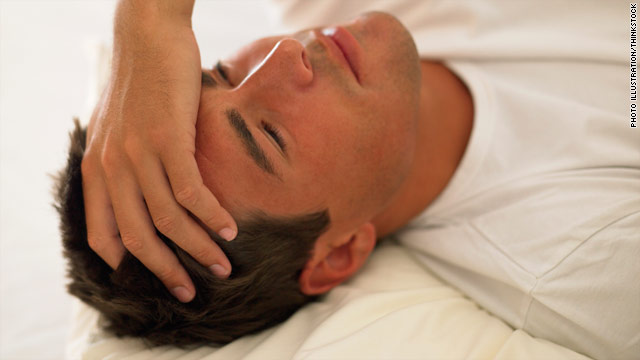 Babies aren't the only ones who benefit from gentle rocking. A new study suggests that when you lie down for some shut-eye, swaying in a hammock will help you fall asleep faster and make you sleep more deeply than napping on a stationary bed or couch.
Babies aren't the only ones who benefit from gentle rocking. A new study suggests that when you lie down for some shut-eye, swaying in a hammock will help you fall asleep faster and make you sleep more deeply than napping on a stationary bed or couch.Swiss researchers monitored the brain activity of 12 men during a 45-minute nap on a stationary bed and a nap of the same length on a gently rocking bed designed to simulate a hammock.
When they were in the "hammock," the men drifted off to sleep one minute faster, on average, and entered a deeper stage of sleep more than three minutes faster than when they napped in the still bed, the researchers found.
In addition, the researchers were surprised to discover that the men, while rocking, spent nearly five more minutes in that second stage of sleep (known as N2), which typically makes up about half of a normal night's rest. They also spent less time in the initial stage that serves as a transition between wakefulness and sleep.
Health.com: Seven tips for the best sleep ever
Although the study is small - even for brain-monitoring research - and the results will need to be confirmed in future experiments, the researchers say their findings could lead to novel treatments for insomnia and other sleep disorders.
"This (research) could be helpful in terms of patients who typically suffer from sleep-onset difficulty and sleep-maintenance difficulty," says Sophie Schwartz, Ph.D., one of the study's authors and a professor of neuroscience at the University of Geneva.
Health.com: Take a backyard vacation
Schwartz and her colleagues aren't certain why hammocks help put us to sleep. One explanation may be simply that people associate the gentle to-and-fro of a hammock with relaxation, leading them to drift off more easily.
But other brain processes may also be at work. Directly or indirectly, the rocking motion may activate regions of the brain that are involved in sleep, such as the amygdala. In fact, the authors say, rocking back and forth may actually "synchronize" brain waves in a way that promotes deeper sleep.
Health.com: Which sleep position is healthiest?
The researchers measured brain activity with electroencephalography (EEG), which uses electrodes placed on the scalp to gauge brain activity. When the men were rocking, the researchers found a higher concentration of "spindles" on their EEG readouts - the defining characteristic of N2 sleep - and evidence of more slow-wave brain activity, an indicator of deep sleep.
The effect of rocking on the brain may even play a role in brain functions besides sleep, such as memory and healing after brain damage, according to the researchers.
"Rocking during a nap or night of sleep might be good for other cognitive functions," Schwartz says.


 Watching violence on television or TV before bedtime can lead to sleep problems for preschoolers, according to a new study in the journal Pediatrics. Experts have known for some time that too much TV time can negatively impact our sleep, but this new research finds that what young children watch and when they watch it can make a difference as well.
Watching violence on television or TV before bedtime can lead to sleep problems for preschoolers, according to a new study in the journal Pediatrics. Experts have known for some time that too much TV time can negatively impact our sleep, but this new research finds that what young children watch and when they watch it can make a difference as well.







 Modern outbreaks – swine flu, bird flu, SARS – have been scary and deadly, but they don't hold a candle to a plague called the Black Death. The disease killed an estimated one-third of Europe's population, perhaps 100 million people.
Modern outbreaks – swine flu, bird flu, SARS – have been scary and deadly, but they don't hold a candle to a plague called the Black Death. The disease killed an estimated one-third of Europe's population, perhaps 100 million people.